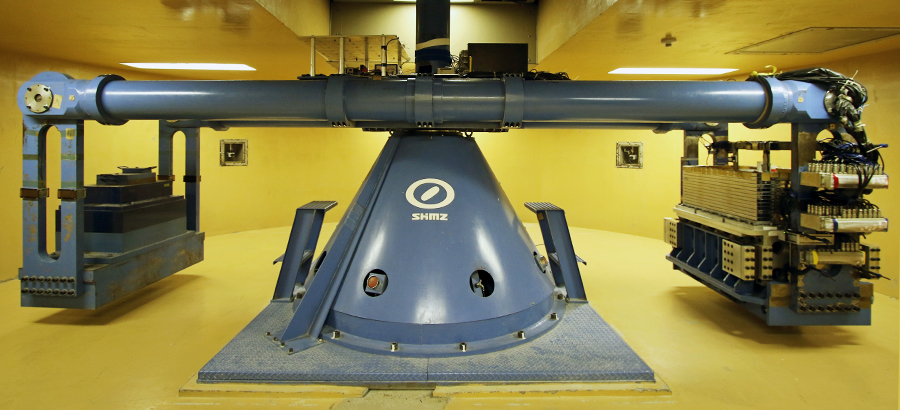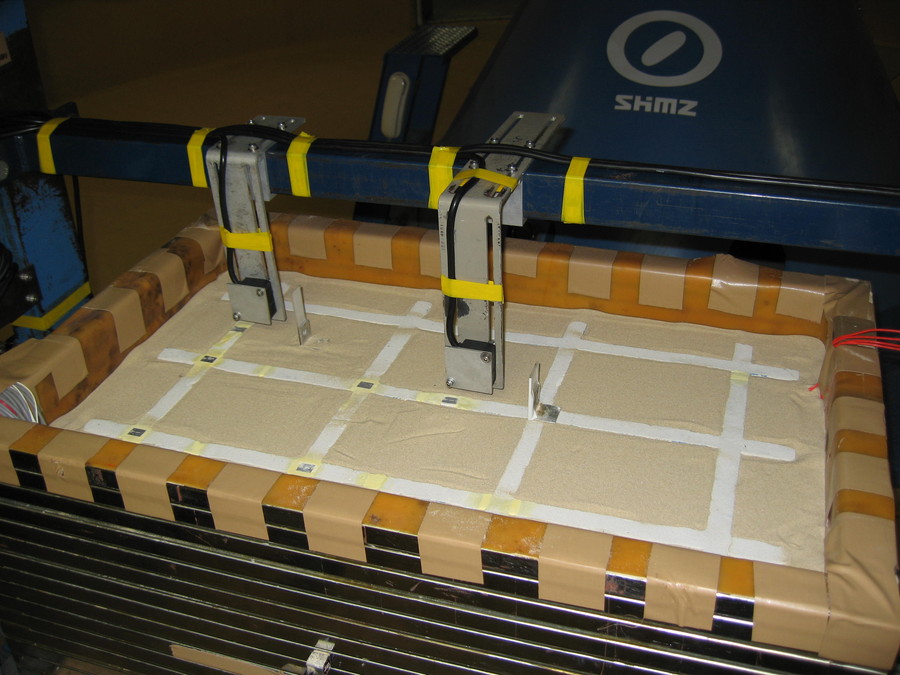
Simulates the behavior of the ground and structures utilizing centrifugal force
In this laboratory, we conduct experiments related to ground and structures. The behavior of actual ground and structures can be simulated in small-scale models by applying centrifugal force. Using the centrifuge, we are able to simulate liquefaction, slope failure, and other ground-related disasters, and based on the test results, we develop countermeasures against them. We also work on the development of practical foundations such as piled raft foundations and soil improvement.
Types of Testing
- Simulation of liquefaction, lateral spreading in sandy soil, slope failure, and landslide, as well as confirmation of countermeasure performances
- Evaluation of pile bearing capacity by axial compression and pull-out test
- Simulation of consolidation settlement of cohesive soil, and evaluation of its impact on structures
- Evaluation of dynamic interaction between ground, foundation and superstructure
Facility Features
Geotechnical Beam Centrifuge
- Effective radius of 3.1 meters, centrifugal acceleration up to 100 G, payload capacity of 300 kg (shaking test)
- 64-channel monitoring system, data recording via wireless LAN
- Electromagnetic shaking table
Geotechnical Laboratory
- Unconfined compression testing apparatus, triaxial testing apparatus, hollow cylinder torsional testing apparatus, true triaxial stress testing apparatus
- Shear wave velocity measurement of soil samples using bender elements and ultrasonic sensors
Examples of Tests and Achievements
- Gravel Support (simple countermeasure against liquefaction for small structures)
- Design method for lattice-shaped soil improvement (countermeasure against liquefaction)
- Construction method to prevent uplifting of underground structures during liquefaction
- Countermeasure against lateral spreading by counterfort sheet pile
- Non-destructive quality inspection of cement-treated soil (Vs-QUIC system)
- Simulation of stone wall collapse and support system for restoration

with (left) and without (right) Gravel Support


















